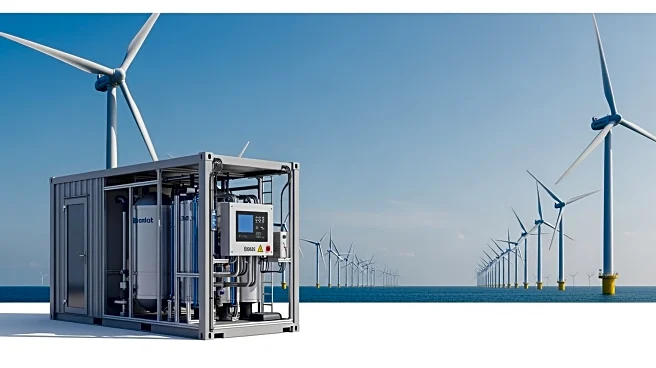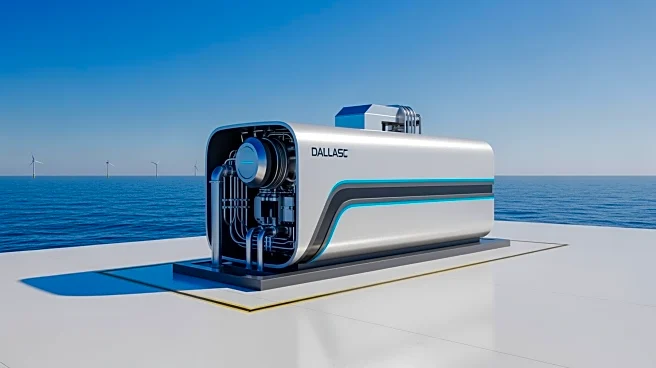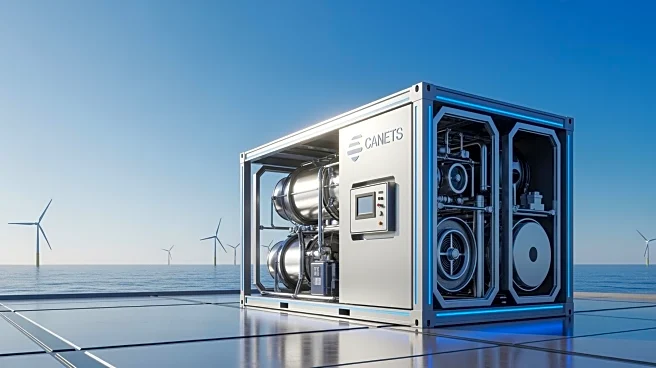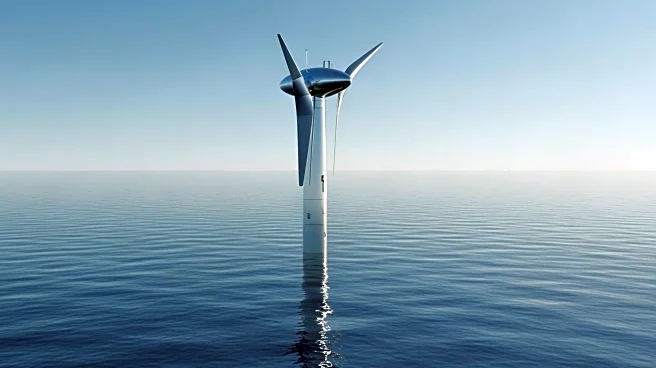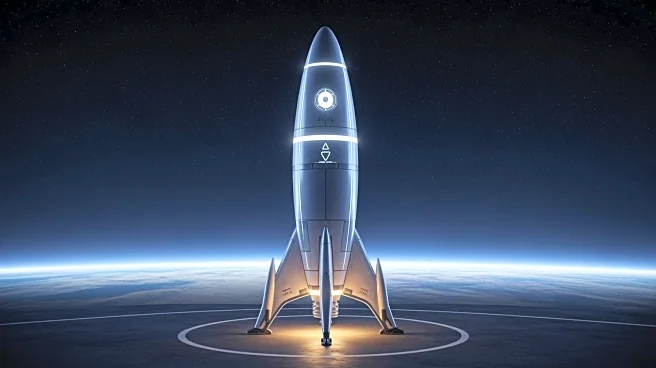What's Happening?
BIO-UV Group has successfully deployed its containerized BIO-SEA ballast water treatment system at Port-la-Nouvelle in southern France. This marks the first commercial use of the system in support of the EFGL floating offshore wind project in the Mediterranean.
The project, operated by Eoliennes Flottantes du Golfe du Lion, represents the first floating offshore wind development in the Occitanie region. BIO-UV's system treated ballast water from three floating wind turbine platforms, ensuring compliance with IMO D-2 standards and local regulations. The containerized unit offers a modular solution for treating ballast water, preventing the spread of invasive aquatic species and supporting marine biodiversity.
Why It's Important?
The successful deployment of BIO-UV's ballast water treatment system is a significant milestone for integrating environmental technologies into the renewable energy sector. Floating offshore wind projects are crucial for Europe's net-zero ambitions, as they enable access to deep-water sites. By ensuring ballast water is treated before release, the project supports ecological integrity and prevents the transfer of non-indigenous species. This innovation aligns with the growing need for sustainable practices in the offshore wind industry, highlighting the importance of environmental management technologies in achieving regulatory compliance and operational efficiency.
What's Next?
BIO-UV Group plans to explore further commercial opportunities for its containerized ballast water treatment technology in future floating wind developments across Europe and beyond. The company aims to expand its presence in the offshore wind industry, leveraging the success of the EFGL project to promote broader adoption of its solutions. As the floating wind market scales up, environmental protection and regulatory compliance will remain key priorities, driving demand for innovative water treatment technologies.
Beyond the Headlines
The deployment of containerized ballast water treatment systems reflects a broader trend towards modular and mobile solutions in environmental management. This approach offers flexibility and efficiency, reducing the need for permanent facilities and minimizing environmental impact. The success of such technologies may influence industry standards and encourage further innovation in marine environmental protection.
